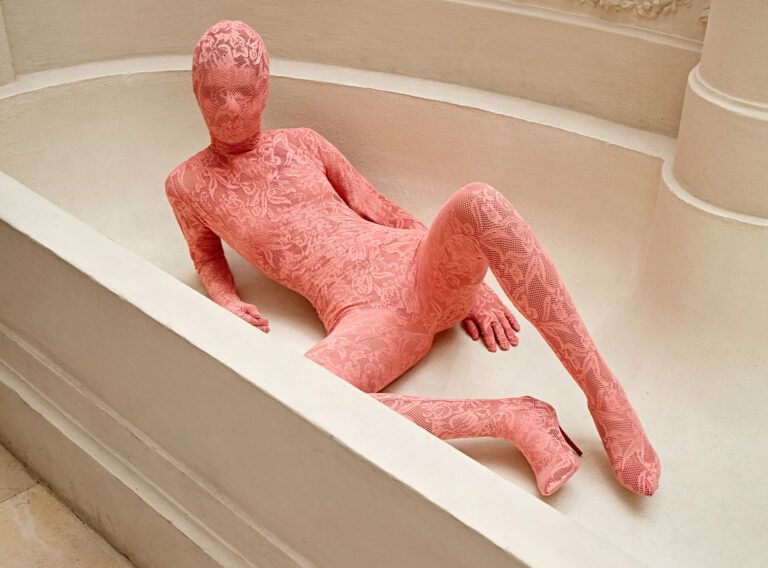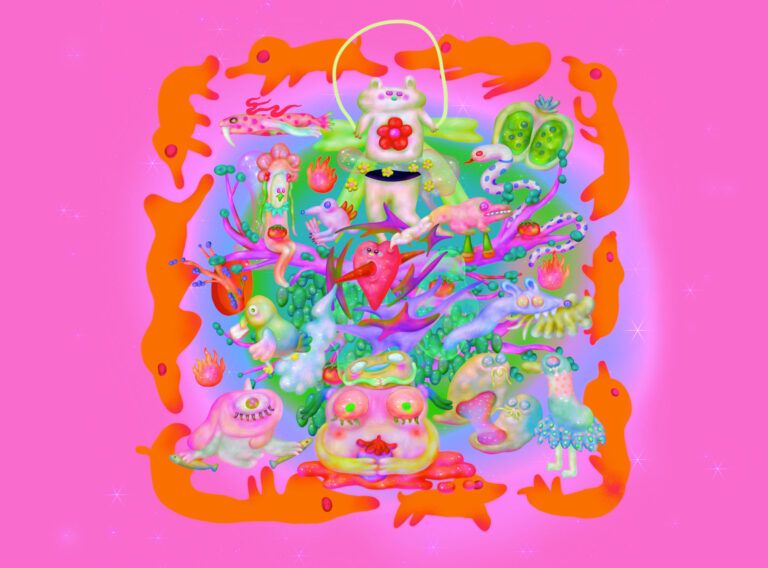How would you describe your style and what influences have shaped it on your creative journey?
My artistic style is a fusion of various sources of inspiration. It incorporates gothic elements, aesthetically, and revolves around the themes of death and vanity. Some of my work bears resemblance to ritualistic artifacts, drawing from occult visual realms. Especially my sculptures of otherworldly flora show allusions to cyberpunk due to their slightly techno-futuristic and unsettling aspects.
My creative journey has been profoundly influenced by my very personal process of dealing with the outlook of ecological collapse, which led me to experience a kind of hopelessness previously unknown to me. I needed to find ways to symbolise this inner turmoil. Additionally, due to my academic background, I have always been fascinated by the functions that myth and delusion have for us as organisms. Coming into contact with Berlin’s experimental art world introduced me to a new visual language that resonated with the moods and ideas I wished to express.



Let’s walk with your creative process a little bit. What specific aspects brought you the most joy?
The foundation of my sculptures has an element of randomness to it, as it is composed of crystallised organic or thrifted materials. I find great joy in working with this randomness and allowing my intuition to guide the shaping process. Also, letting go of preconceived notions and adapting my visions to the reality in front of me is an important practice for me.


Your art seems to delve into the delusion of control and chaos, asking, “What’s your favourite illusion?” How does this theme play out in your art?
During my studies in psychology and my current specialisation in behavioural therapy, I am often confronted with the concepts of sanity and insanity. It deeply fascinates me how illusions of control are a fundamental part of our healthy mental immune system, yet they can also lead to what is perceived as “insanity” if they develop a life of their own — both individually and societally. In my work, I interrogate the relationship of our illusions to adaptive and emotional functions, as well as the ambiguity of them being both a trap and a shelter.


Are there any particular textures in the material that enhance your connection to it as an artist?
As the crystallised organic material undergoes a visual transformation under layers of resin, it sometimes takes on a resemblance to archaeological artifacts. As a child, I wanted to become an archaeologist, which makes me feel particularly connected with these emerging structures.



Now, at SWARM Mag, we are focusing on the theme THE ROOTS OF TASTE. So, the last question is: how do you remain connected to your roots while embracing the future?
My goal is to develop my visual world as iterations of my aesthetic core, exploring various aspects, formats, and techniques in visual excursions, and then returning to other core features of my style to further pursue the other paths they indicate. Through this approach, I aim to orbit around my roots, creating a continuity that still allows for change and growth.






